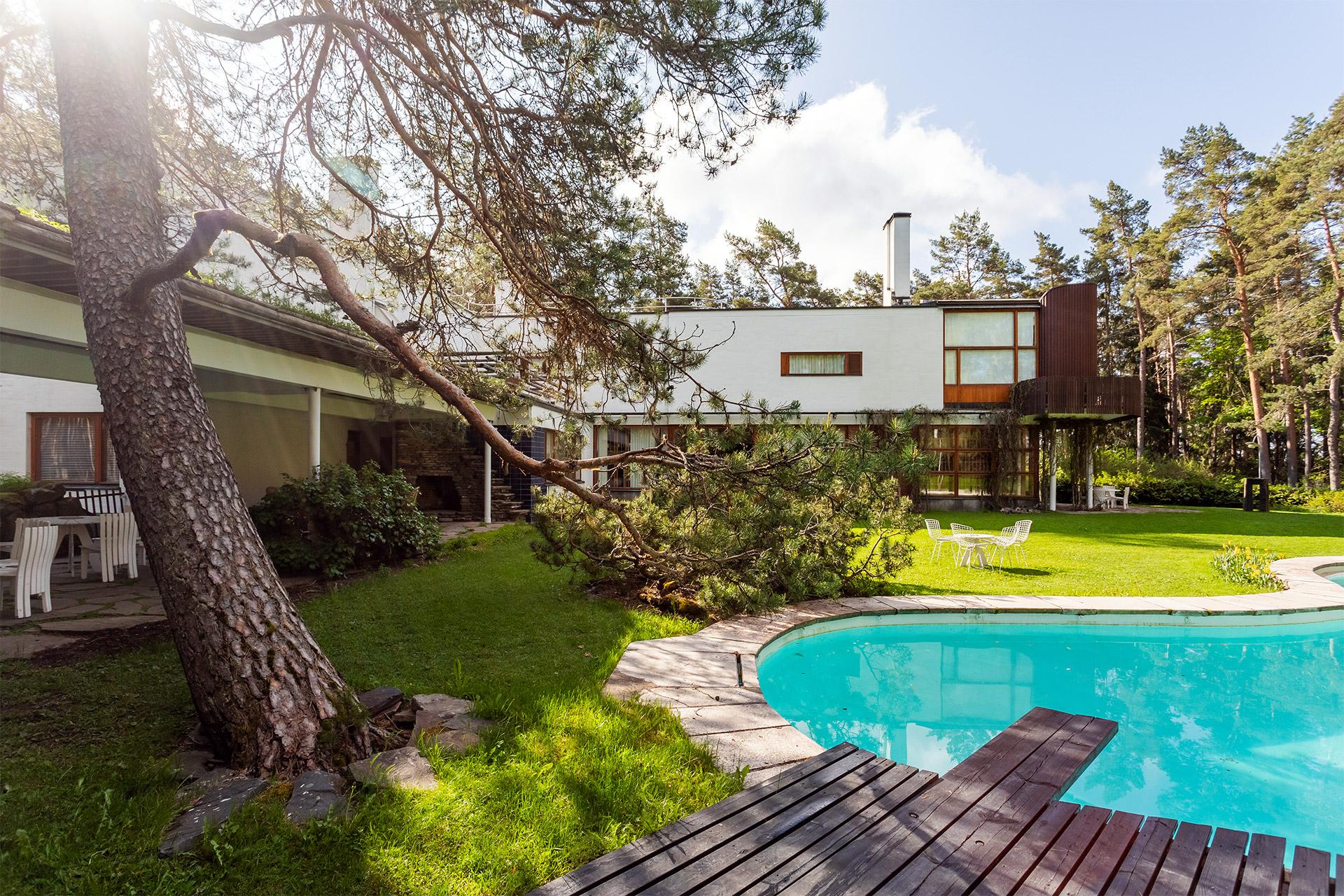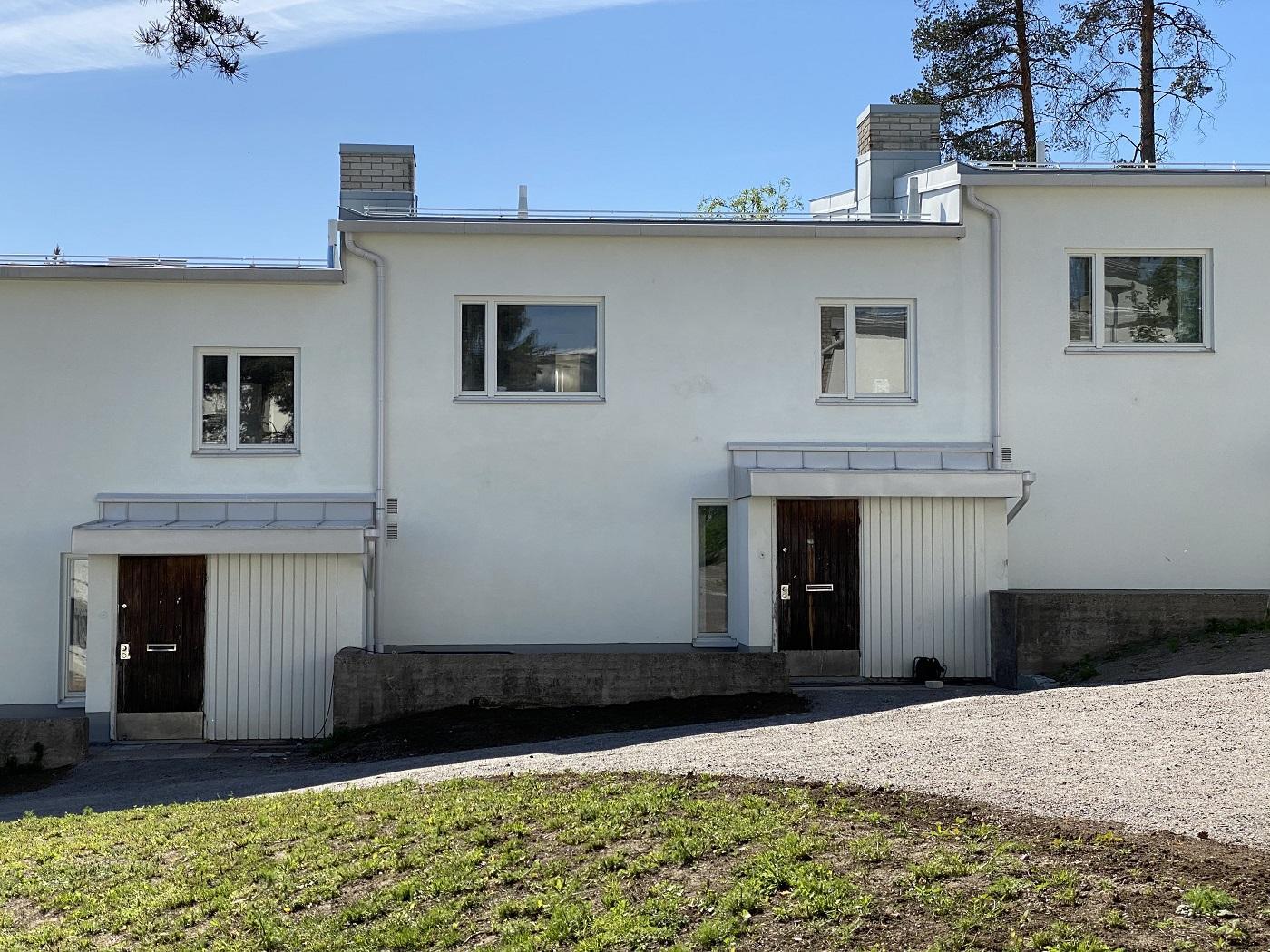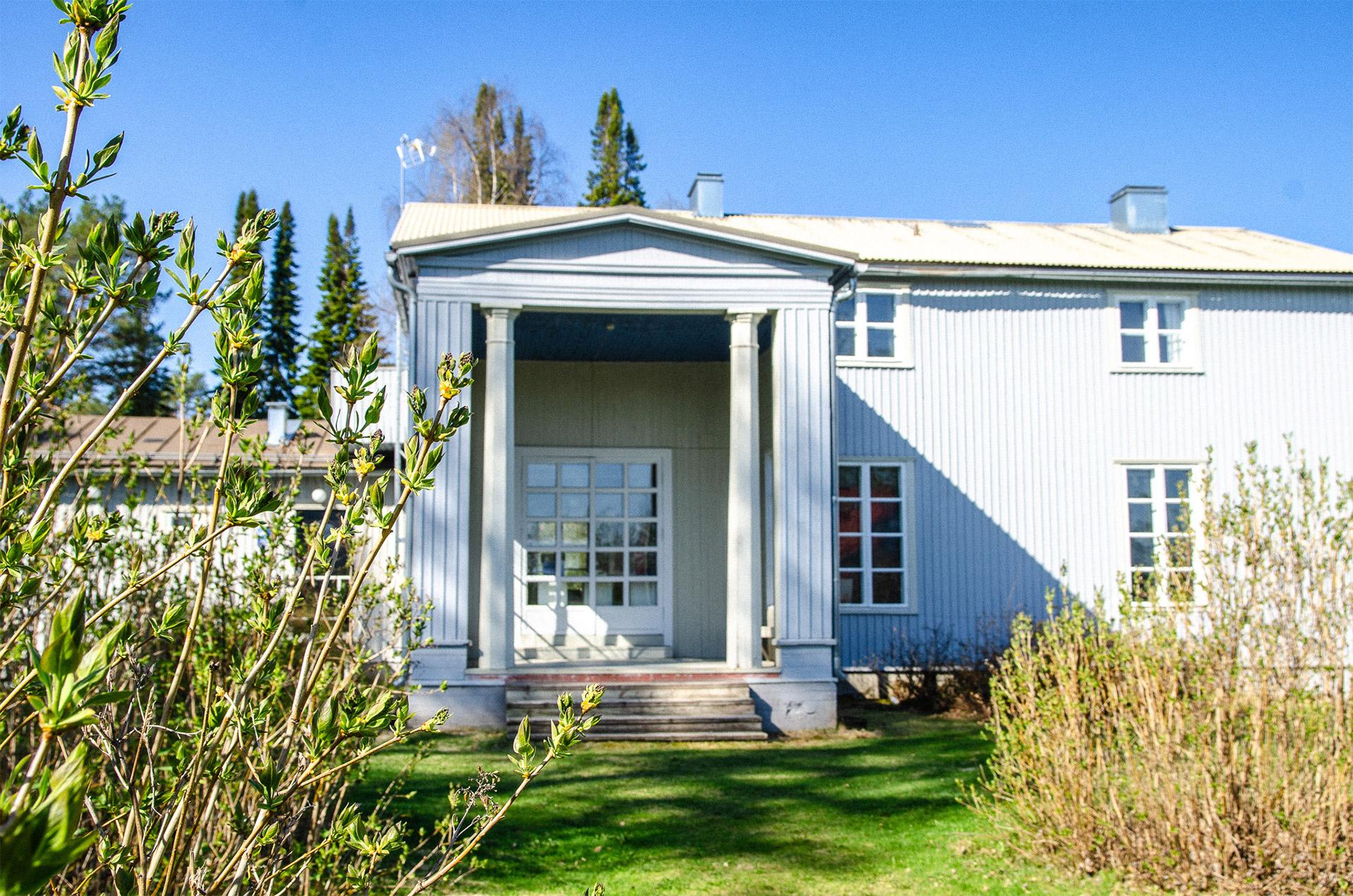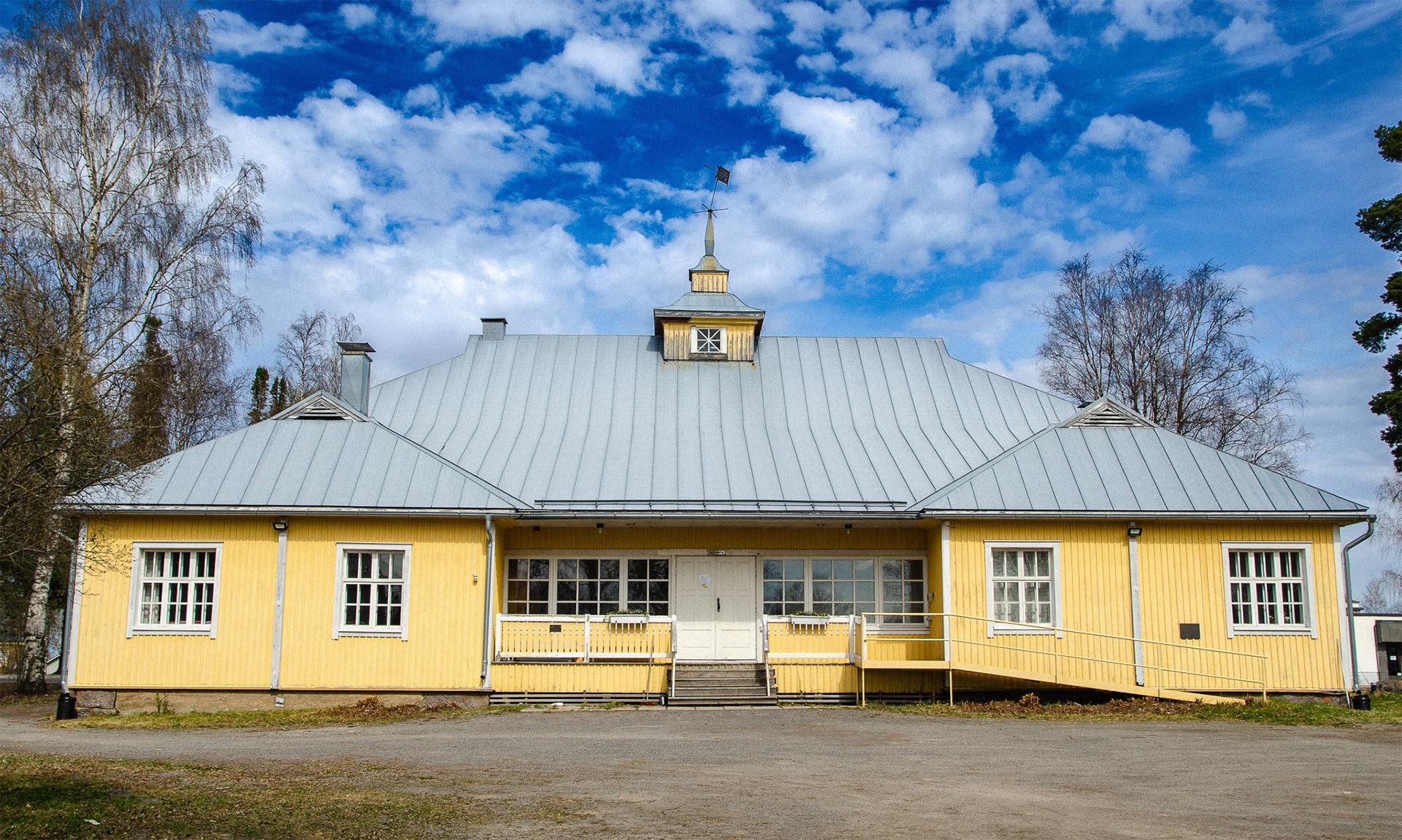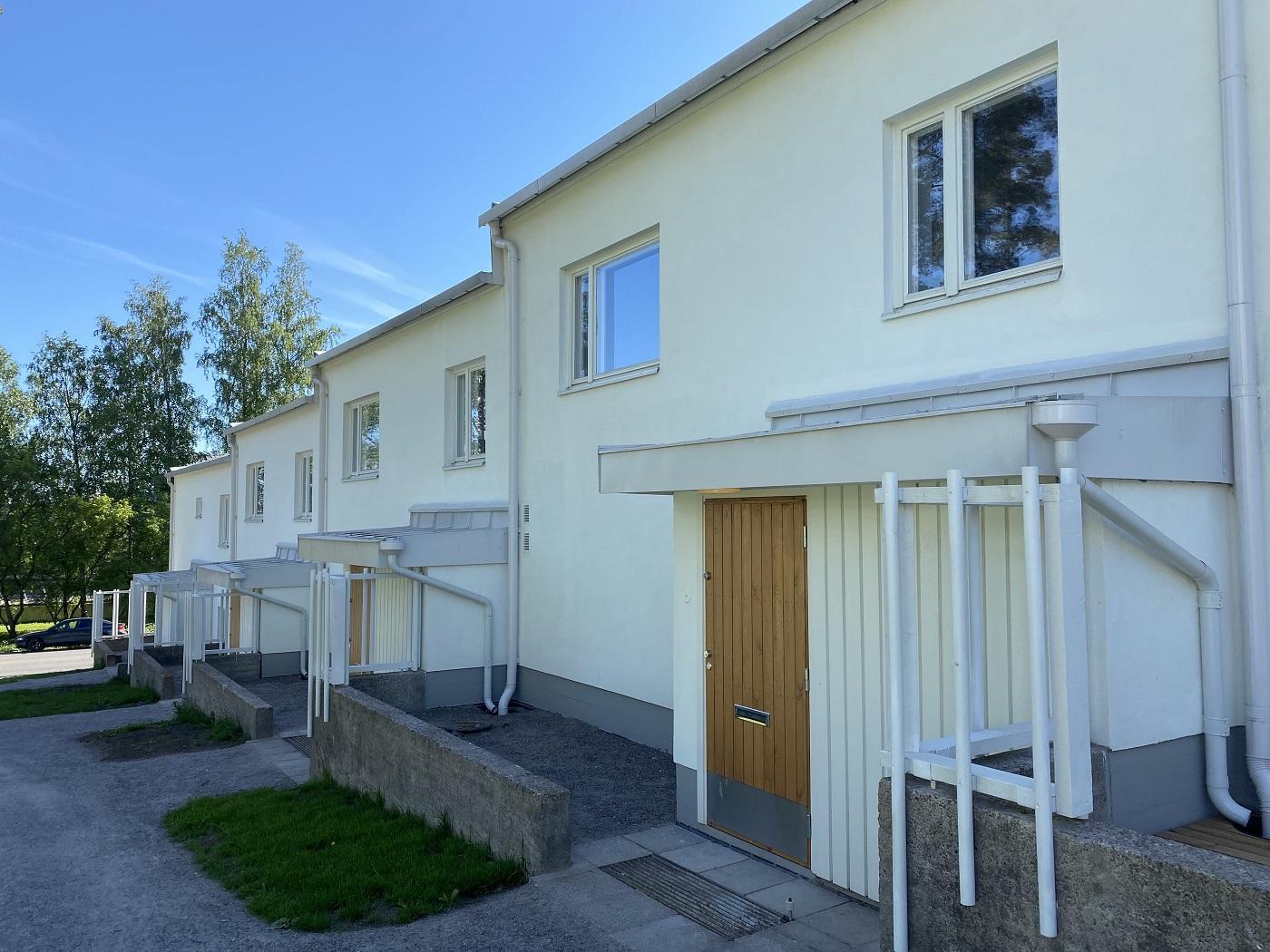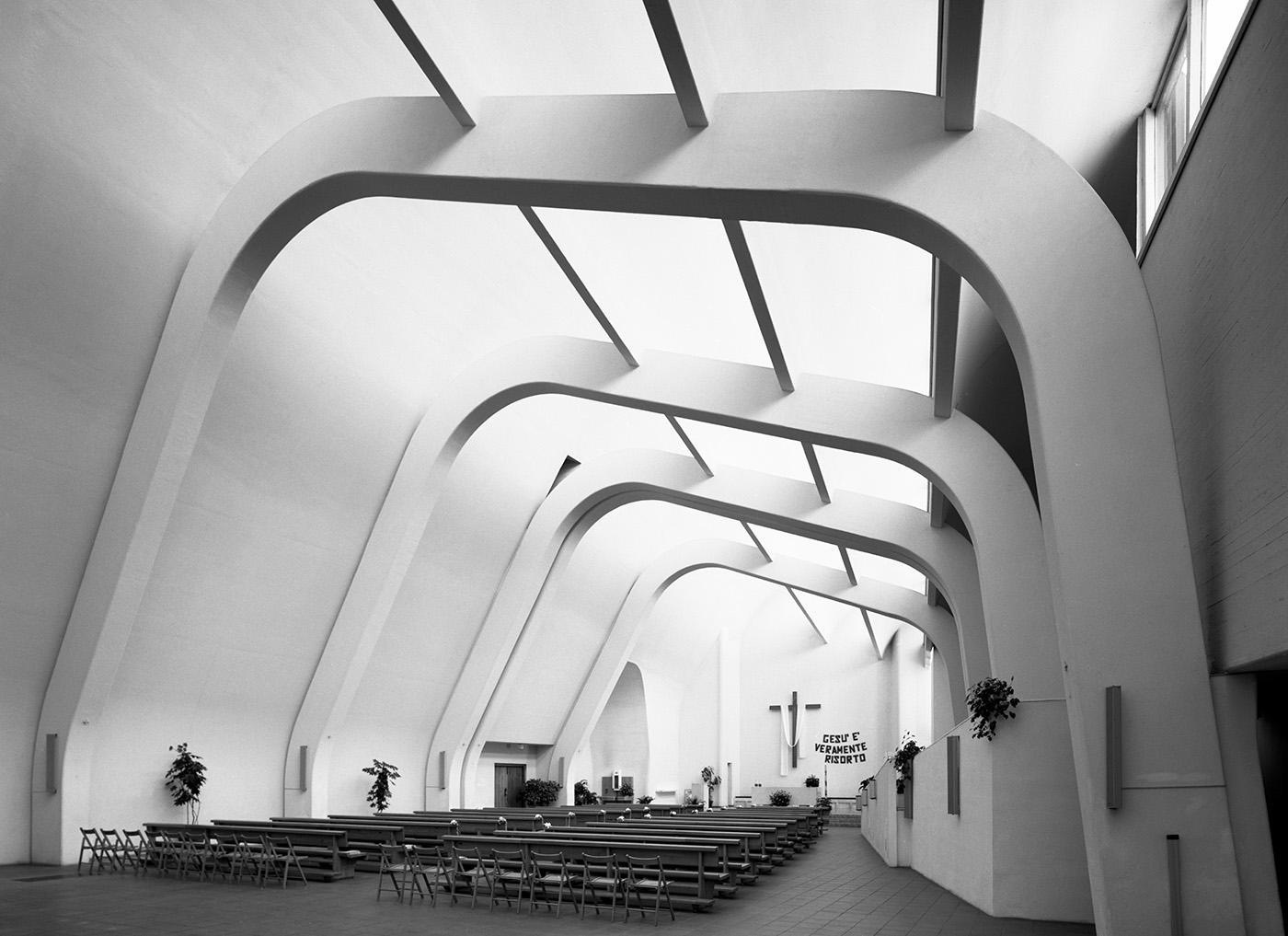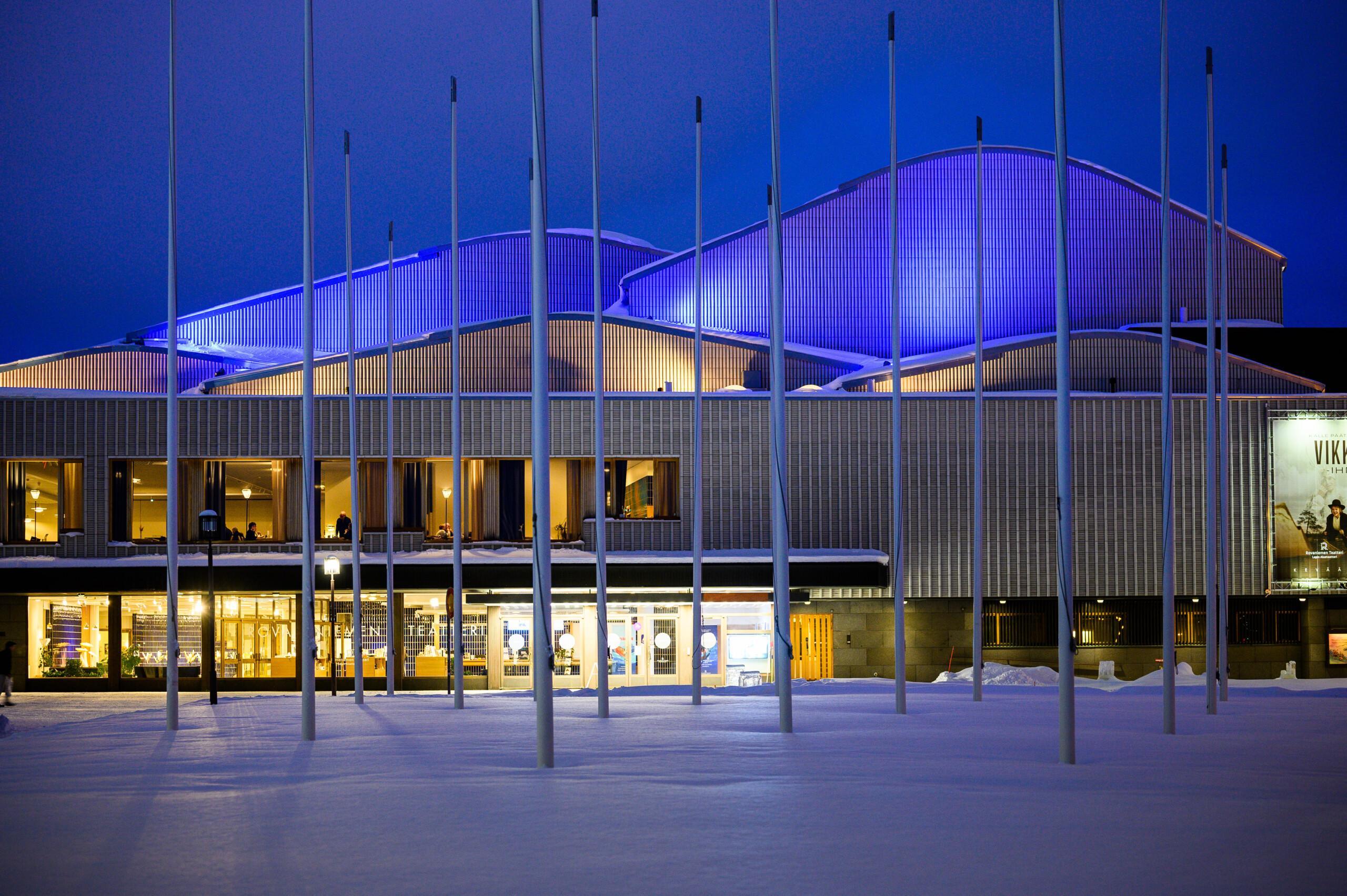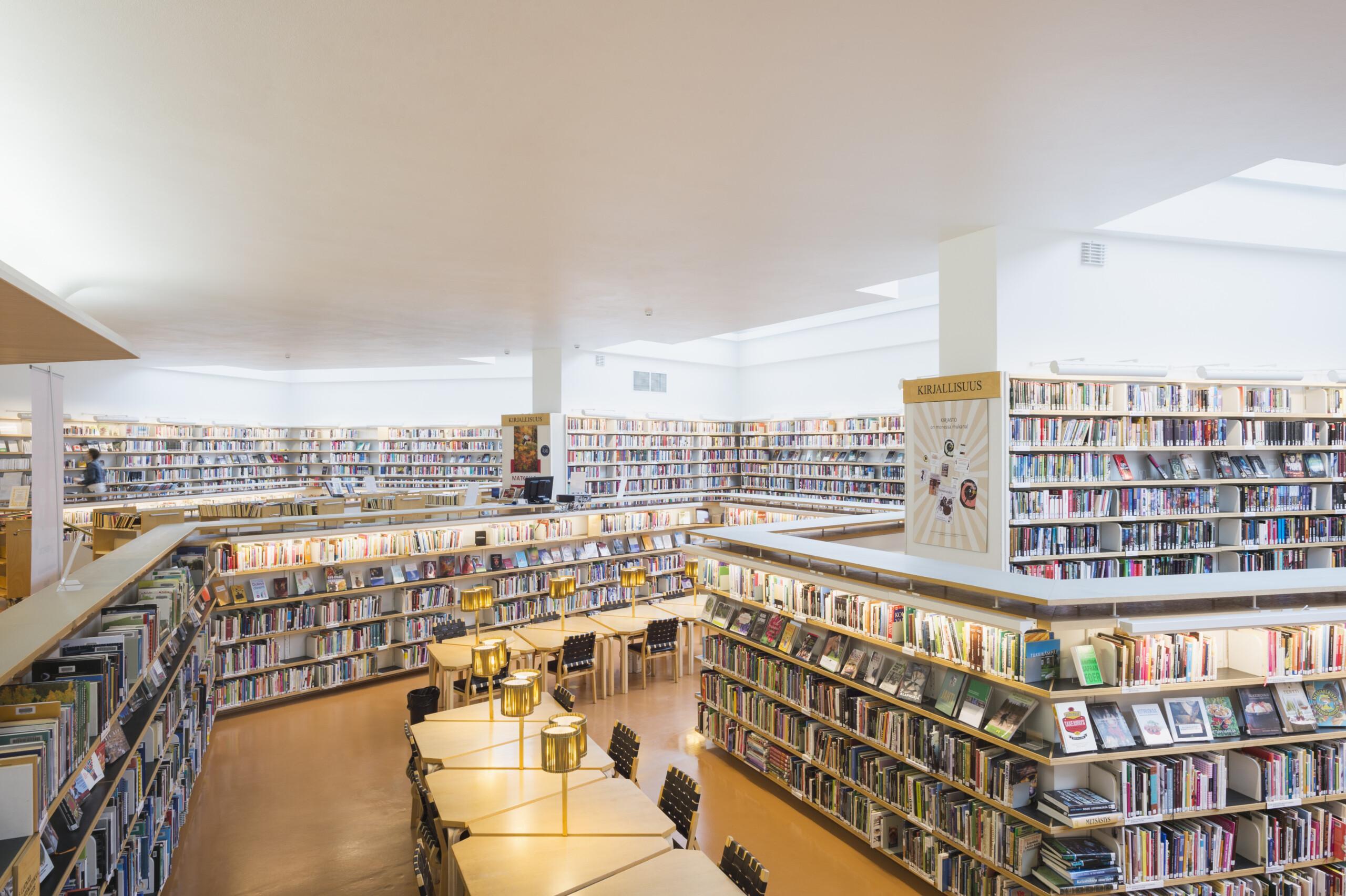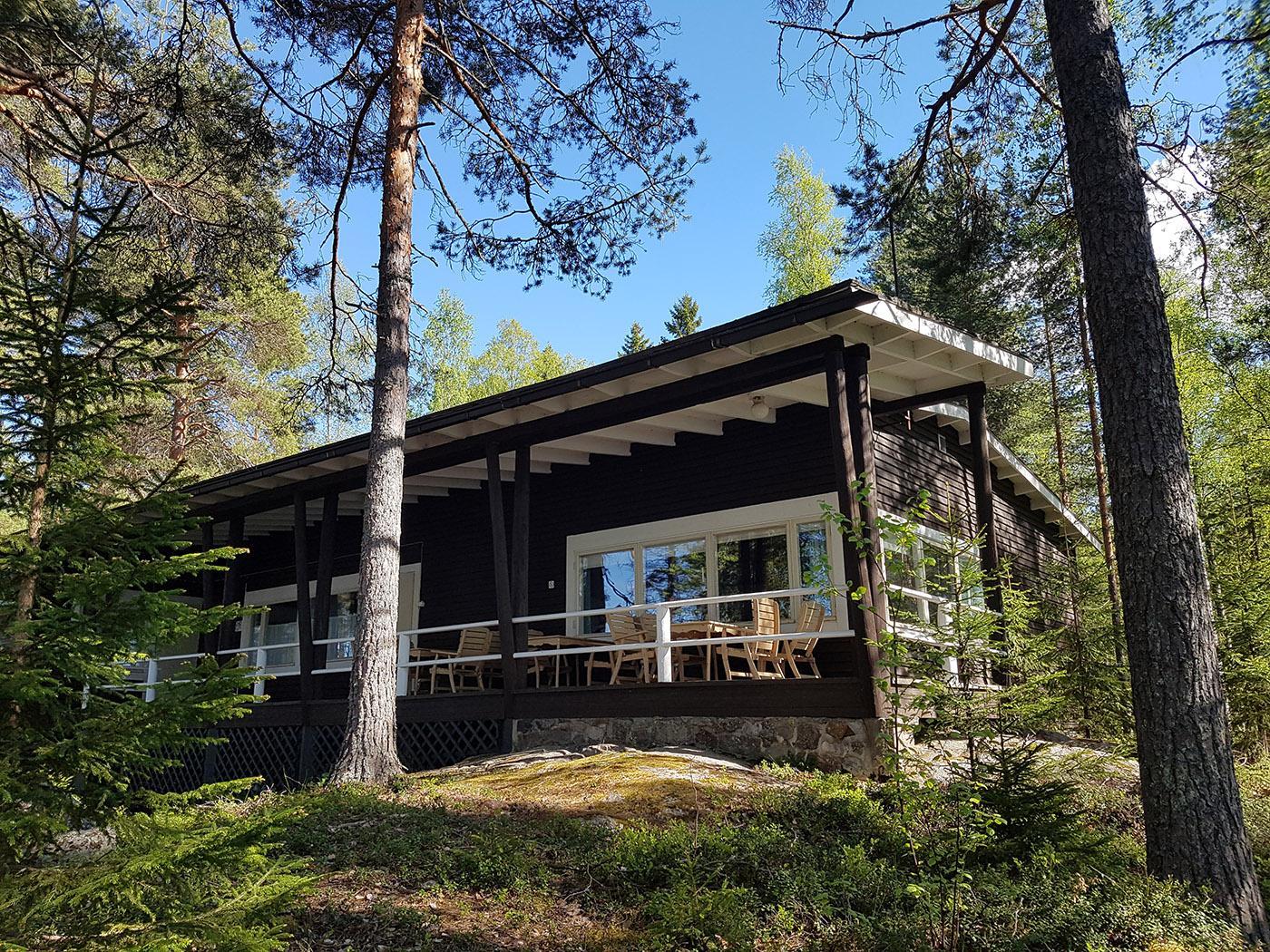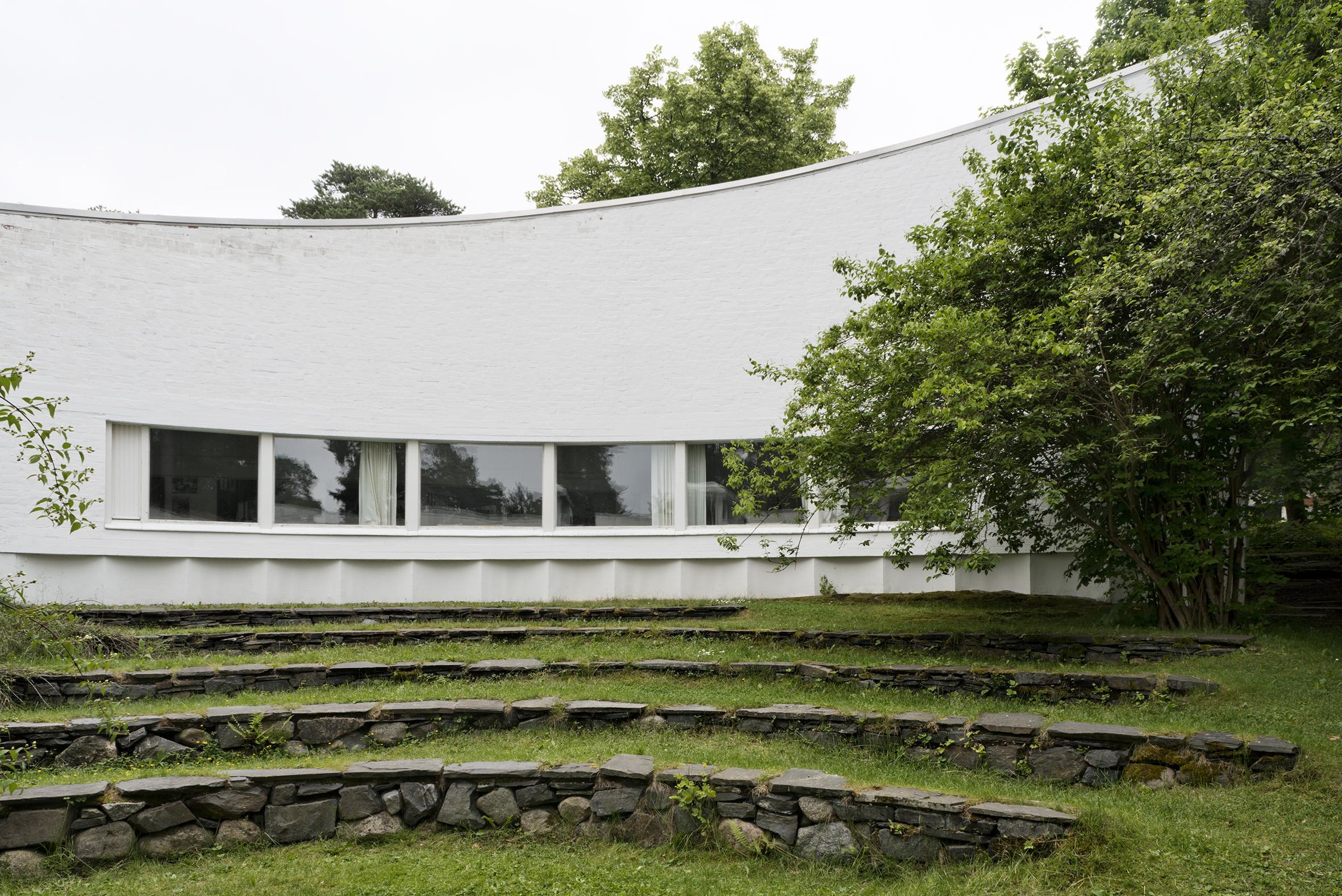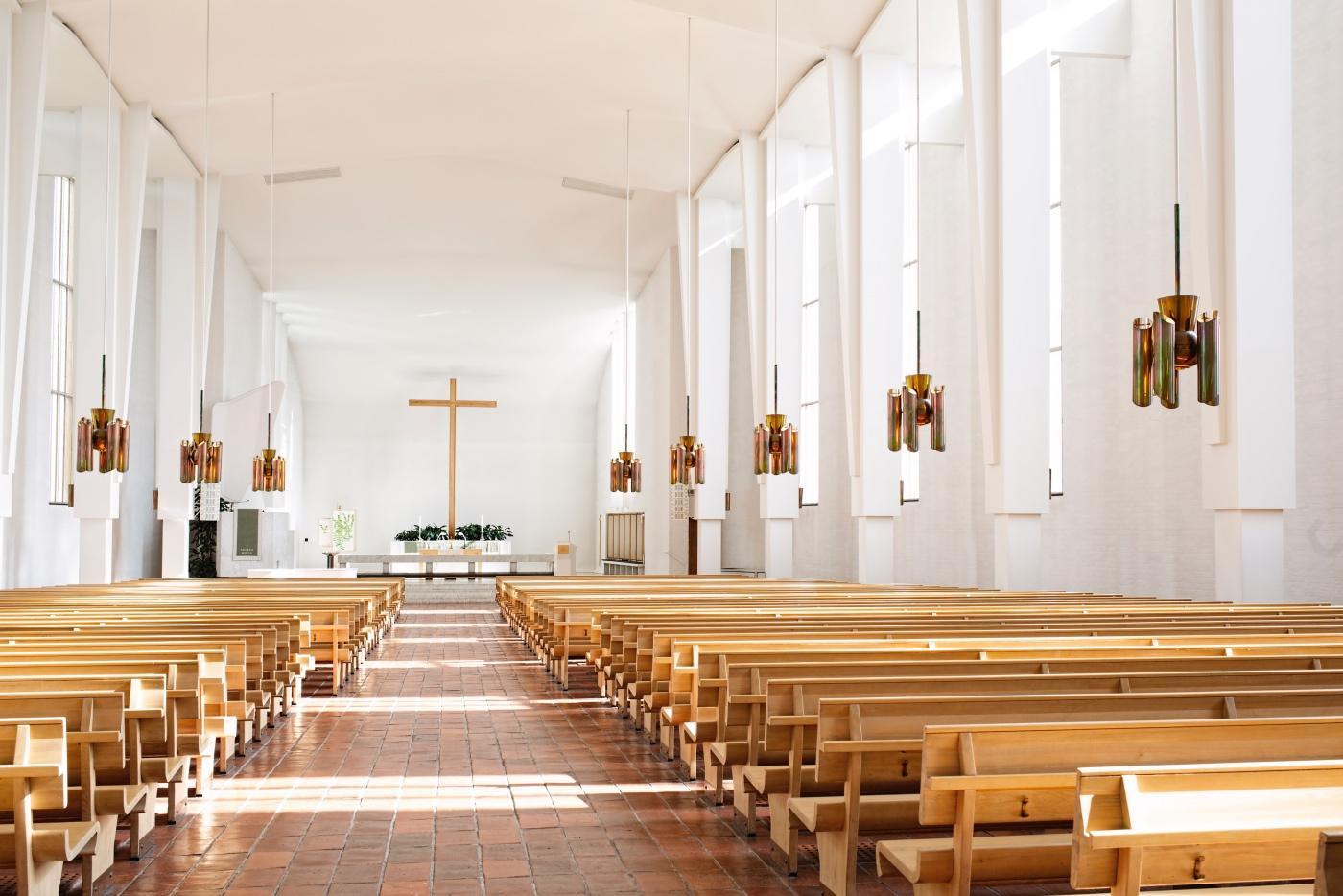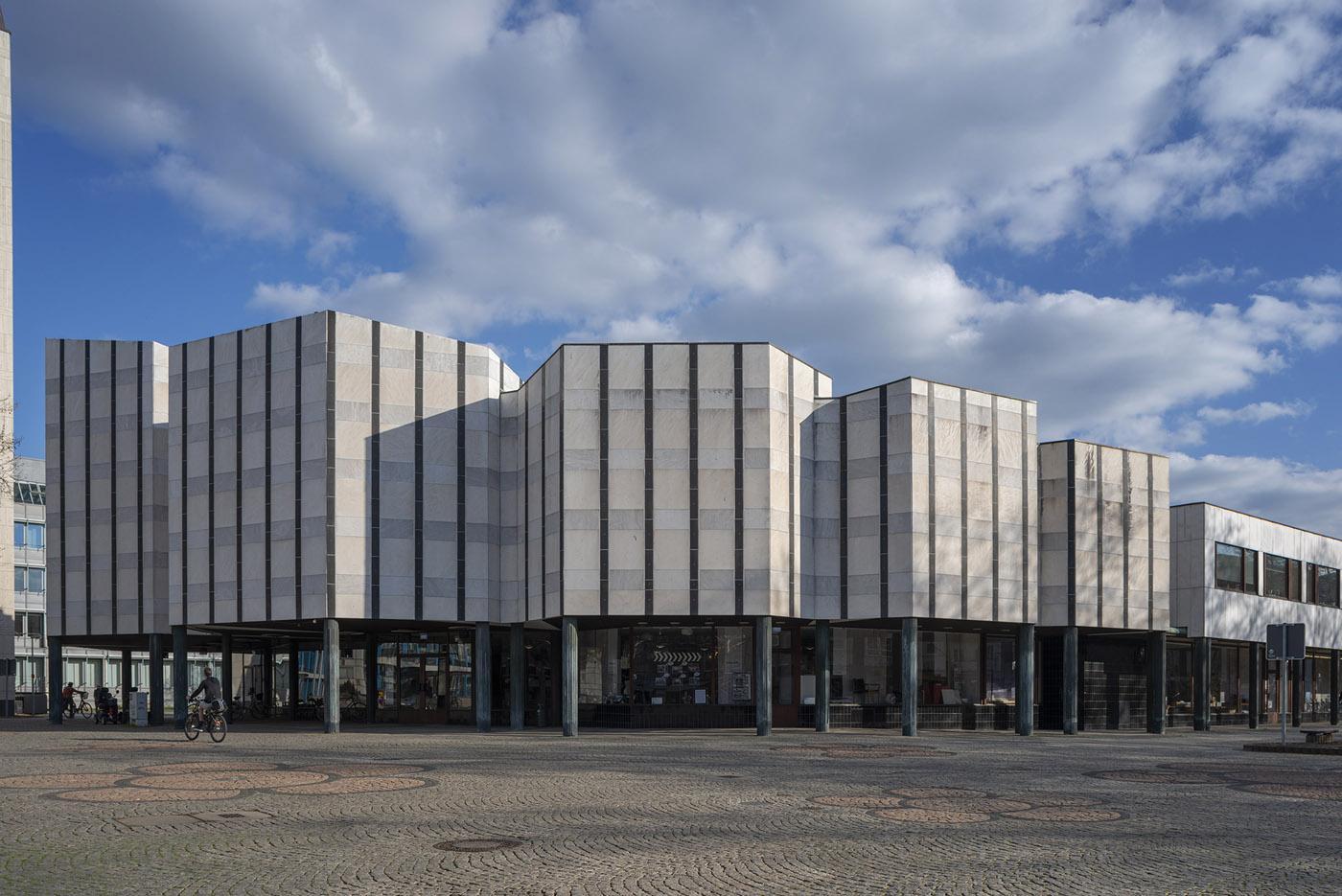This seven-night tour allows you to discover the top cultural sights in Western Finland. You can begin your tour from Turku or Vaasa as both towns are connected to Sweden by car ferry (Viking Line, Tallink Silja or Wasaline). You may head in either direction and take the tour throughout the year. You can manage the duration and route according to your own timetable.
Transport: Car or taxi
The gems of Finnish aviation history in Vantaa
During this day tour you will learn about the history of Finnish aviation and get to admire a special Aalto destination in Vantaa. The Aviation Museum offers a lot to see and experience for both aviation enthusiasts and novices, and is ideal for a family trip. The museum displays approximately 70 aircrafts from different eras, as well as many other aviation-related artefacts such as engines and scale models. Visitors can get acquainted with travel, hobby and military Finnish aviation by touring the two large permanent exhibition halls and a third hall for changing exhibitions.
The architecturally significant terraced house complex Aerola, designed by Alvar Aalto, is also located in Vantaa, within the Veromies neighbourhood, and it is strongly linked to the history of the Helsinki-Vantaa Airport. The terraced houses were designed as apartments for the employees of Finnair’s predecessor Aero Oy, and they were built on Pyhtäänkorventie street during 1953–1955. Aerola’s terraced houses are also the only buildings designed by Aalto that are situated in Vantaa, and they are a valuable part of the city’s cultural heritage.
Nelimarkka Museum and Villa Väinölä in Alajärvi
Nelimarkka Museum
The Nelimarkka Museum in Alajärvi was founded by the painter and professor Eero Nelimarkka (1891-1977) in 1964. The building was designed by his friend, the architect Hilding Ekelund. Since 1995 it has functioned as the Regional Art Museum of Southern Ostrobothnia. It focuses on displaying regional Ostrobothnian art, but art education also plays an important role in its activities.
Temporary exhibitions, workshops and events for visitors of all ages are organized regularly. Since the mid-1980s the museum has also run an international residency program for artists. In the summertime you can enjoy coffee and cake in the light atmosphere of the museum’s: “Café de Nelimarkka”. The museum shop is open year-round. You can book a customized tour or a workshop at the museum. The Nelimarkka museum maintains as well the nearby Villa Nelimarkka and Villa Väinölä, located in the centre of Alajärvi.
Villa Väinölä
Alvar Aalto designed Villa Väinölä as his brother’s home and office. It is said that Aalto drew the first version of the building after his honeymoon to Italy. Villa Väinölä’s original plan, sketched in 1925, was based on drawings made by Aalto of ancient roman atriums witnessed in Italy. However, the plan was found to be too expensive and visionary to implement, so Aalto simplified the design according to his brother’s wishes, and a more affordable version of the building was completed in 1926. Aalto also designed an outbuilding at the north end of the main building, which was completed in 1938.
Väinö Aalto and his family moved away from Alajärvi in the early 1950s, and in 1952, the municipality of Alajärvi bought Villa Väinölä. During the ownership of the municipality of Alajärvi, an additional wing was added to the southern end of the building, in order to function as a reception area for a doctor’s office that operated in the Villa at the time. Villa Väinölä has at one time hosted also a tax office, a dental office and leisure offices of the municipality of Alajärvi, as well as housing and building inspection offices. The ownership of the building was moved over to the Nelimarkka Museum in 2015.
The latest renovation of Villa Väinölä was completed in the spring of 2018, and it was financed with the help of the National Board of Antiquities, Aisapari and the City of Alajärvi. Exhibitions, events and architectural residencies are currently organised at Villa Väinölä. Through the Nelimarkka Museum, the building can also be booked for meetings and private parties.
Youth Association Building in Alajärvi
The Alajärvi Youth Association building from 1920 is one of the buildings designed by Alvar Aalto during his studies. It is also his first public building design. Construction work was carried out quickly, and the building is still in use nowadays. The current Youth Association building, that was formerly the Defence Corps building, was completed in 1920, and it was inaugurated on November 28. Until 1946, the building housed the local Defence Corps and Lotta Svärd departments. In 1946, the building was bought by the Youth Association club, that still owns it.
The log building is in Neoclassical style. The outer walls are covered in vertical wooden boards, and the open high roof gives the building a castle-like feel. Cross beams support the ceiling of the main hall; the elevation is so high that there is enough space for a theatre stage and an orchestra balcony. The building is topped by a Carolean lantern on the roof, which is reminiscent of the bell tower of a church. The two side wings originally embraced a small courtyard of honour, that has since been replaced by a built-in vestibule.
The Youth Association building is located along Sairaalatie street, close to the centre of Alajärvi. However, the building has been largely rebuilt due to a fire damaging it in 1983. The Youth Association building was restored to its original form during the renovation work, and the inauguration of the new house was held in 1985. The Alajärvi Youth Association Club maintains and renovates the building within the limitations of the received funding and grants.
The Alajärvi Youth Association Club also offers the possibility of renting the building. The premises of the Youth Association building provide a great setting for organising parties and other events such as weddings and birthdays, meetings and concerts. The premises are well suited for gatherings of about 30-100 people.
Aerola Terraced Houses in Vantaa
When Finland was selected to host the 1952 Summer Olympics, it also contributed to the construction of the current Helsinki-Vantaa Airport. Scheduled air traffic in Finland had also grown rapidly at the turn of the 1940s and 1950s. Malmi Airport, which had been completed in 1936, was no longer able to meet the growing demand, and a decision was taken to build a new airport. The Helsinki-Vantaa Airport (1952) was completed just a little over a month before the start of the Olympics, and soon afterwards Alvar Aalto’s Architect Office was commissioned to design employment housing for the staff of Finnair’s predecessor Aero Oy in proximity to the new airport.
In early drafts from 1952, the terraced houses of Aerola were originally placed right next to the brand new airport. Later, in 1953, the site for the new residential area was relocated to its current location, a little further from the airport. Aerola’s terraced house complex consists of two identical 2-storey terraced houses stepping on a slope, each comprising 20 apartments of different sizes.
Entrances open on both sides: the west side gives access to the studios and one three-room apartment located on the south end of the building, while the three-room and one four-room apartments, which develop on two floors, have entrances on the east side. Each apartment has an independent entrance fronting onto a small courtyard area. The garages are located at the end of the buildings, and the basements include separate storage rooms for all of the dwellings. In the middle of the plot, between the two rows of houses, stands an L-shaped building that houses the sauna, laundry room and heating centre.
This whitewashed building complex was constructed between 1953-55, originally planned as part of a larger entity, which also included four apartment buildings and a few detached houses. After the first phase consisting of the terraced houses and the sauna and laundry building, however, the project was not developed further, and a vocational school was later built on the site.
Aerola’s terraced houses complex is an important historical entity within the city of Vantaa. In order to protect it, the city even altered an originally approved redevelopment plan in 2008. In addition, some elements of the interiors of the apartments are also protected by law. The year 2018 saw the beginning of renovation works in Aerola under plans made by the architectural firm A-Konsultit in connection with the Vantaa City Museum and the Alvar Aalto Foundation. Renovation of the first terraced house was completed in the spring of 2020 and renovations of the second house have since begun.
Riola church and parish centre
The small mountain village of Riola di Vergato lies on a slope of the Apennines some forty kilometres south of Bologna, along the road to Pistoia. The ecumenically inclined Bishop of Bologna, Cardinal Giacomo Lercaro, asked Aalto in 1965 to design a small church next to the old highway bridge across the river Reno. Aalto’s initial plan from 1966 already showed the church in its final form, but it was later supplemented by a wider plan including a retirement home and a kindergarten. Plans were then further developed in 1969 and again in 1975, continuing until 1980.
As Aalto had done in Seinäjoki, Aalto laid out an enclosed piazza in front of the church, in order to enable a large congregation of thousands to participate in divine services at major religious festivals. Aalto also thought that the church itself, which normally seats a congregation of 200, could be equipped with a gigantic sliding wall in order to divide it up, according to need, into a mini-church – comprising the altar, chancel, and baptistery – and a larger room for non-religious events. The church has an asymmetrical basilica disposition of a slightly wedge-like shape; the unusual roof system consists of a stepped vault whose fragments run longitudinally on one side, while the other side slopes towards the chancel. The surfaces of the fragmented vault are glazed, so that the whole church is bathed in sunlight reflected by them. The vault system is borne by seven gently curved, asymmetrical concrete arches that emerge from the ground on one of the long sides; they recall the shapes of Aalto’s famous wood furniture.
To the left of the chancel is the vestry, which forms part of the vicar’s apartment. The baptistery is on a somewhat lower level to the right of the chancel; it has a lantern visible from the outside and a window overlooking the river below. A campanile, consisting of five parallel vertical concrete planks, rises on the far side of the forecourt, providing an optical lift as a counterpart to the sloped roof of the church. The forecourt is walled off on one of its long sides, sheltered from the ravine of the river. The opposite side is lined by a colonnade and a modest parish building housing youth clubs, meeting rooms, etc.
Lappia Hall in Rovaniemi
Lappia Hall is part of the Rovaniemi administrative and cultural center, the Aalto Center, designed by Alvar Aalto. The building is a well-known landmark of Rovaniemi. Lappia Hall was built in two parts. The first part, including the music school, was completed in 1972, and the main part of the building used by the theater in 1975. Lappia Hall was the last building that Alvar Aalto saw completed before his death.
The undulating roof structure of the building resembles the fell landscape of Lapland. The curved shapes of the roof are illuminated in different colors, and in its evening outfit Lappia Hall is a particularly magnificent sight. Lappia Hall is a total work of art characteristic of the Aaltos. Aalto’s office designed not only the building but also the interior and furniture. From the outside, the building is finished with light rod-shaped ceramic tiles.
The floor surfaces of the interior of the building are covered with Lapland marble and the interior walls are decorated with dark shiny cobalt rod-shaped ceramic tiles. The unique architecture of Lappia Hall is specially designed for the use of cultural actors. The Rovaniemi Theatre / Lapland Regional Theatre, the Lapland Music and Dance Institute and the Rovaniemi School of Visual Arts currently operate in the building. Over the years, Lapland’s regional radio and Lapland’s regional museum have also operated there. The comprehensive renovation of the building was completed in 2015.
Rovaniemi City Library
The library building, which was completed in 1965, was the first of the Rovaniemi administrative and cultural center buildings.
The Rovaniemi library consists of two connected parts: a fan-shaped library hall and an elongated, rectangular office wing. The interior design of the library followed the idea typical of Aalto’s libraries, where the library’s reading rooms were placed on a lower level than the rest of the library hall, in their own recesses. The goal of the hall’s fan-like shape is to enable the staff to have an unobstructed view of the entire hall. In addition to the library hall, the building contains, among other things, a music library, magazine rooms, an exhibition and auditorium hall, and a children’s section.
Natural light and lighting played an important role in the library’s plans. Indirect natural light is brought into the premises by various upper and roof windows and an exceptionally wide variety of fixed special lamps. This creates a great atmosphere in the building in the changing northern light, from dark winters to nightless nights in summer. Some of the furniture and lighting in the library are Artek’s standard models, but Aalto’s office also designed special furniture and at least 10 different lighting models for the building.
The Rovaniemi library is closed for the time being due to renovations that are scheduled to be completed in the summer of 2025.
Kinkamon Aalto in Varkaus
Kinkamo is the first building that Alvar Aalto designed in Varkaus. Kinkamo was designed to be a weekend cabin in Kopolanniemi for the workers of the A. Ahlström factory. Kinkamo is a good example of Aalto’s efforts to adapt the building to its natural surroundings: it is located on a lake shore at the edge of the forest and it is not visible from the opposite shore, or from passing boats. The Warkaus Factory club-association approved the construction of Kinkamo during a general meeting held on May 12th, in 1937. The name Kinkamo was the result of a name competition organized in 1939.
Kinkamo is a joint project of Alvar and Aino Aalto: Alvar Aalto was commissioned a plan for the building in 1937, while the interiors were designed by Aino Aalto. The long building has a spacious veranda with a roof supported by sloping columns, a large open living area with a fireplace, and a separate sleeping wing. It also has a kitchen, drying room and a room for the housekeeper. The building’s horizontal line is emphasized by the horizontal timber cladding and narrow horizontal windows in the sleeping wing.
While designing Kinkamo, the architect couple played with historical motifs in an unusual manner. The originally open sleeping alcoves, furnished with built-in bunk beds, recalled a traditional Finnish rural style. The large dining table and separate chairs inside the dining hall, as well as the light fixtures, combine functionalism with medieval impressions in a unique way. The perforated decoration on the curved backrest of the dining chairs is also a practicality: it makes it easier to grab and move the chair. The medieval reference of the furniture conceived for Kinkamo is most clearly evident in one specific chair model: a high-backrest throne chair with four-leaved clover shapes pierced at the top of the backrest and a crown in the middle. Above the dining table is a straight five-lamp chandelier that repeats the motifs of the dining chairs.
Kinkamo is also equipped with a sauna: until 1976 in a structure re-adapted from a modular house designed by architect Kristian Gullichsen, which was then replaced with a sauna designed by architect Seppo Mykrä. The Warkaus Factory Club sold Kinkamo to A. Ahlström Oy in 1953, with the selling price being paid to the Varkaus branch of the General Mannerheim League for child welfare. In 1994, Kinkamo was transferred to Enso Gutzeit Oy, to be used for representation purposes. In the spring of 2019, Kinkamo was bought by Jukka Leväinen, a civil engineering entrepreneur from Varkaus, who then founded the company Kinkamon Aalto, which provides event and conference services.
Seaside museums – Architecture, art and home museums by the sea!
A self-guided museum tour around the Laajalahti bay, outside the usual tourist routes, reveals seven unique museum sites that can be experienced together or separately. In addition to the scenic surroundings, the sites are united under interesting architecture and the fact that they have originally been homes and / or workspaces. The Didrichsen Art Museum, Villa Gyllenberg and Gallen-Kallela museums also feature significant art collections and changing exhibitions.
In Alvar Aalto’s home and office building in Munkkiniemi you can take part in guided tours all year round. Aficionados of architecture and design will get an insight into the interesting life of the Aalto family and everyday life of architects’ office. During the visit, you can also explore the beautiful gardens surrounding the buildings.
On a guided tour in Tamminiemi you will learn about the house’s most famous and longest-lived inhabitant: president Urho Kekkonen (1900–1986), and discover the original interiors and design from the 1970s. Tamminiemi’s legendary tar-smelling, seaside sauna can also be visited during the summer season.
The nearby Seurasaari open-air museum comes alive in the summer. The beautiful and fascinating traditional Finnish buildings, immersed into the magnificent natural setting of the island, constitute a favourite destination for both Helsinki locals and travellers around.
There are as many as two high-quality art museums on the small Kuusisaari island. The Didrichsen Art Museum has 2-3 changing exhibitions each year. The neighbouring Villa Gyllenberg features museum’s permanent collection which includes, amongst other masterpieces, 38 works by Helene Schjerfbeck. In addition, the museum also organises changing exhibitions. On Saturdays during the summer, Kuusisaari can be reached also by water bus running between Market Square in the city centre and Kuusisaari.
The northern shore of Laajalahti bay also offers exciting museum experiences, as well as a pleasant museum café where visitors can spend a relaxing moment. The Gallen-Kallela Museum, located in a castle-like villa designed by artist Akseli Gallen-Kallela, presents the art and life of Gallen-Kallela and his contemporaries with changing exhibitions, as well as exhibitions of contemporary art. From April you can also cycle to the museum on a city bike.
Cross Of The Plains and the Parish Centre
Aalto took part in a competition for a large church and parish centre announced by Seinäjoki parish in 1951, sending in an entry marked “Lakeuksien risti” (“Cross of the plains”).
Instead of placing the parish rooms under the church or in a smaller, separate building, as the other entrants had done, Aalto seized upon the big religious events commonly organized in Osthrobotnia in summer. He laid out a large piazza, loping down towards the church and girded by the parish facilities, in front of the church´s main facade. He laid out a large piazza, loping down towards the church and girded by the parish facilities, in front of the church´s main facade. This space-consuming solution obliged Aalto to exceed the prescribed construction limit by some twenty metres, which prevented the jury from awarding him a prize. The jury awarded Aalto´s entry a purchase and recommended it as the basis for implementation.
Aalto was commissioned to develop the plain further. The church was built between 1958 and 1960 and the large parish centre in front between 1964 and 1966. The church was basically build to the competition design, except that Aalto had hoped to use black granite as the facade material; for reasons of cost, however, he had to be content with brick rendered white, only the side chapel being faced with granite.
The main characteristics of the church complex are as follows: on the north side stands the campanile, 65 metres high, in the shape of a stylized cross. Monumentally vertical, visible from afar in the endless plains, it is the town´s symbol. The slightly wedge-shaped, symmetrical church interior is 47 metres long and provides seating for a congregation of 1400. The vestry lies behind the altar, and between it and the campanile is a tiny baptistery and wedding chapel with a stained-glass work by Aalto. Aalto also designed the church textiles and communion vessels.
The parish centre´s main divergence from the competition entry is the open staircase on an axis from the main facade of the church to the town hall square (built up later). This staircase separates the two wings of the building, which contain a large assembly hall, catering facilities for the congregation, a room for confirmation classes, a clubroom, offices, and several apartments for employees.
Wolfsburg Cultural Center
Wolfsburg Cultural Centre was designed and constructed for a small German city built around automotive industry. In choosing Alvar Aalto as the designer, the young city of Wolfsburg wanted to acquire a higher profile.
The building was designed to house the City Library, the Adult education centre and the Youth club. These three different functions were skillfully combined under the same roof, so that each one of them found their own unique space behind the sculptural façade. Nowadays, the City Library is the only original function of the cultural center still in operation. In addition to the library, today the building houses various business facilities, such as a restaurant called Aalto.
The unique shape of the Wolfsburg Cultural Centre is one of its distinct features. The design of the main façade of the building is very geometric. The building appears to form itself from a series of hexagonal volumes that have been pushed together.
In designing the Wolfsburg Cultural Center, Aalto was presented with the possibility of realizing a plan as a “total work of art”, for a client allowing freedom from constraints of budget and schedule. The building also features personalised solutions, such as the atrium courtyard with a sliding roof and fireplace, opening onto the roof terrace of the building. There are also various skylights in the building that bring natural daylight in.
The façade of the building is Carrara marble, while the interiors are mainly granite and wood. Many details of the building, such as door handles and fixed lighting fixtures, as well as furniture, were also designed by Aalto. Nowadays, many of Aalto’s designs can still be seen inside the building.
